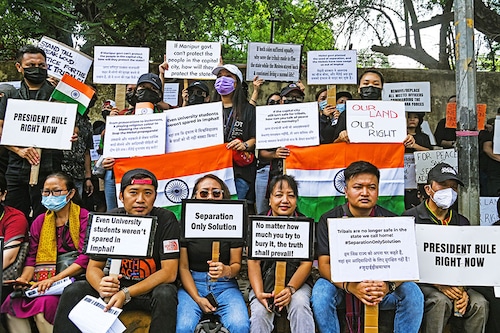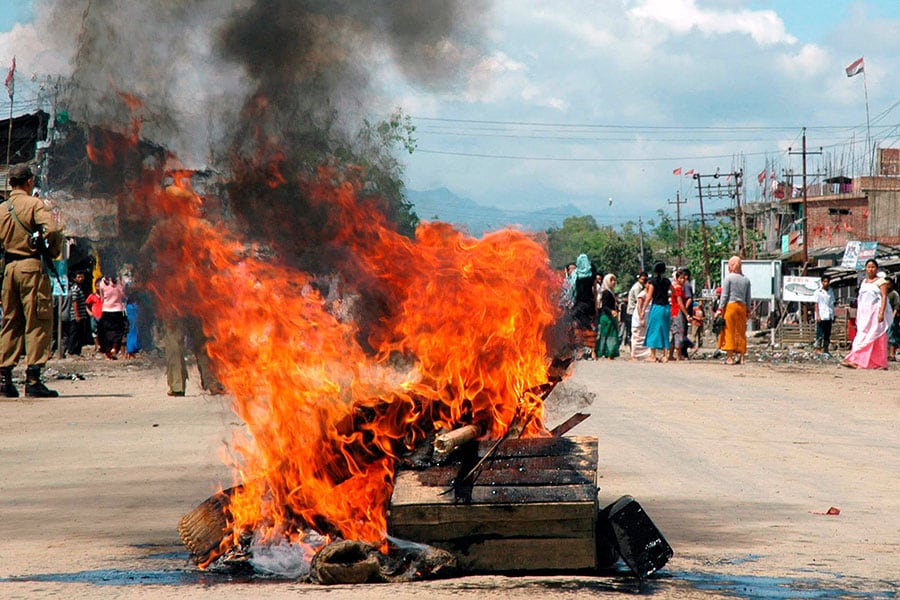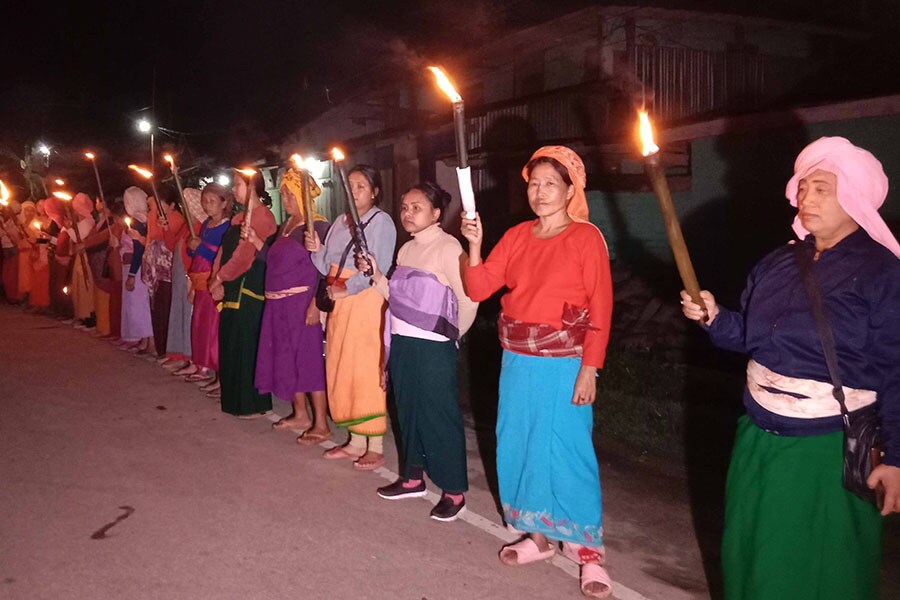Explainer: Making sense of the unrest in Manipur
The clashes between the Meiteis and the Kukis have resulted in over 120 deaths and burning down of at least 4,000 buildings so far. More than 40,000 people are currently displaced in relief camps in t


Over the last 47 days, the state of Manipur in Northeast India has witnessed ethnic clashes primarily between two local communities, the Meiteis and Kukis. The violence has resulted in over 120 deaths and the burning down of at least 4,000 buildings, which include homes and religious sites belonging to both communities. More than 40,000 people are currently displaced in relief camps in the state. These numbers might go up, as the crisis continues. There have been clashes in the past, but not at the current scale.
 Onlookers stand near a fire started on a street in Moreh town in the northeastern Indian state of Manipur June 12, 2007 Image: Reuters
Onlookers stand near a fire started on a street in Moreh town in the northeastern Indian state of Manipur June 12, 2007 Image: Reuters
The Meiteis are not entitled to occupy land beyond the valley in the hill districts as they don"t have Scheduled Tribes status. The Kukis have been demanding a separate administrative area for themselves. The Kuki militant groups have been fighting for a separate state within the Union of India.
The majority, mainly Meitei communities, reportedly want special tribal status to access benefits like cheap loans, farming rights, and job quotas. Tribal groups are trying to prevent that as they feel that this would be an uneven benefit given to a community that has otherwise enjoyed many privileges in the state where it has dominated the legislative assembly and has historically been in power.
The violence was followed by a mass protest by tribal groups, who have aimed their anger at the national and state governments of the Bharatiya Janata Party (BJP), which stands accused of trying to separate communities. Pictures and videos from the state show explosions and large fires. Authorities have issued a "shoot-at-sight" order for the army in extreme cases.
According to the Meiteis, they had been listed as one of the tribes of Manipur before it merged with India in 1949, and they lost this tag when the Constitution (Scheduled Tribes) Order, 1950, was drafted. Claiming that they have thus been left out of the ST list, they have persisted with their demands.
To avoid the transmission of provocative material, misinformation and disinformation through social media platforms, the government of Manipur has issued an order to suspend internet and mobile data services in the state until June 20.

Women form human chain protest demanding peace n India"s north-eastern Manipur state on June 17, 2023 Image: Anuwar Hazarika/NurPhoto via Getty Images
First Published: Jun 19, 2023, 14:08
Subscribe Now